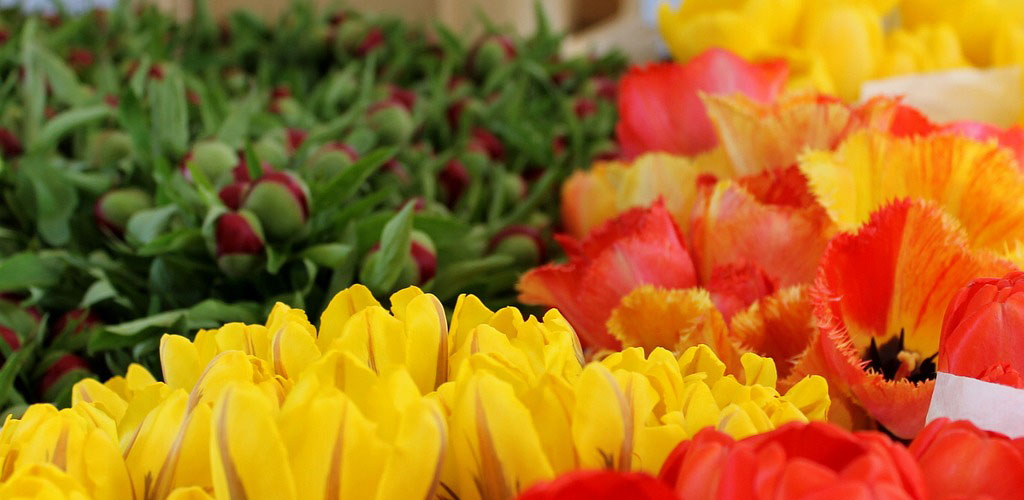Vienna Travel Guide 2025: Your Complete Austria Adventure
Vienna whispers secrets through cobblestone streets, baroque facades, and the gentle clatter of coffee cups in timeless cafés. This isn't merely a city—it's a living museum where Mozart's melodies still echo through gilded concert halls, where Habsburg emperors once ruled an empire, and where the aroma of fresh strudel mingles with the morning air at bustling markets. Welcome to Austria's crown jewel, a destination that transforms every visitor into a temporary Viennese aristocrat.
At the heart of this imperial magnificence lies Naschmarkt, Vienna's culinary soul and the perfect introduction to the city's character. Here, centuries of tradition meet contemporary innovation, creating an atmosphere that captures everything magical about Vienna—its cosmopolitan spirit, its respect for tradition, and its unwavering commitment to the finer things in life.
🏛️ Vienna at a Glance
- Best Time to Visit: April-June, September-October for perfect weather
- Language: German (English widely spoken in tourist areas)
- Currency: Euro (EUR) - cards accepted, but carry cash for markets
- Getting Around: Excellent public transport - U-Bahn, trams, buses
- Duration: Minimum 3-4 days to see highlights, 7+ days for deeper exploration
Vienna's Imperial Legacy: Why This City Captivates
Vienna's story unfolds like a grand opera, with each act revealing new layers of cultural richness. For over 600 years, this was the seat of the Holy Roman Empire, later the Austrian Empire, and finally the Austro-Hungarian monarchy. The Habsburgs didn't just rule from Vienna—they transformed it into a showcase of power, culture, and artistic achievement that still takes breath away today.
Walking through Vienna means stepping through centuries of European history. The Ringstrasse encircles the medieval old town like a necklace of architectural gems—the Opera House where Mahler once conducted, the Parliament building where empire-changing decisions were made, the Kunsthistorisches Museum housing treasures collected by emperors who saw art as the ultimate expression of civilized life.
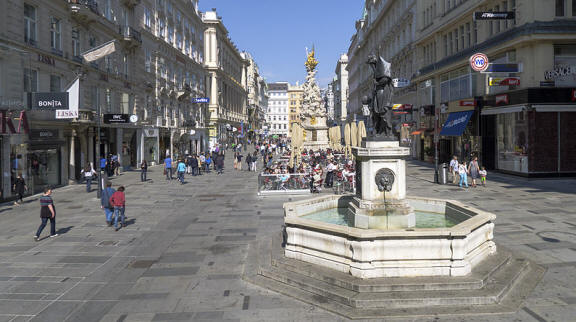
Naschmarkt: Vienna's Culinary Gateway
Every Vienna adventure should begin at Naschmarkt, and not merely for sustenance. This magnificent market, stretching nearly 1.5 kilometers through the heart of the city, represents Vienna's evolution from imperial capital to modern European metropolis. Here you'll taste the influences that shaped Austrian cuisine—Turkish spices from Ottoman times, Hungarian paprika, Italian techniques, and traditional Alpine ingredients all harmonizing in remarkable ways.
Naschmarkt serves as your introduction to Viennese social life. Locals shop here daily, vendors become familiar faces, and the rhythm of market life reveals how Vienna balances tradition with contemporary living. Start your Vienna exploration here, and you'll understand why food culture remains central to the Viennese experience.
💡 First-Time Visitor Tips
- Vienna Card: Consider the 24-72 hour tourist card for museum discounts and public transport
- Tipping: Round up bills or add 10% at restaurants - not mandatory but appreciated
- Dress Code: Vienna appreciates elegant dress, especially for opera and fine dining
- Sunday Closures: Many shops close Sundays; museums and attractions remain open
Vienna's Must-See Attractions: Imperial Splendor Awaits
Schönbrunn Palace: Habsburg Summer Residence
No Vienna visit is complete without experiencing Schönbrunn, the Habsburg summer palace that once rivaled Versailles in magnificence. This UNESCO World Heritage site offers glimpses into imperial life through lavishly decorated state rooms, each telling stories of the monarchy that ruled much of Europe for centuries.
The palace grounds stretch over 500 acres, featuring geometric gardens, fountains, and the world's oldest zoo. Climb to the Gloriette monument for panoramic Vienna views, or wander through the maze where royal children once played. Allow a full day to truly appreciate Schönbrunn's grandeur.
Pro Tips: Book the Grand Tour for access to 40 rooms, visit early morning to avoid crowds, and don't miss the Privy Garden where Maria Theresa held private audiences with European royalty.
Hofburg Palace Complex: Vienna's Imperial Heart
The Hofburg served as the Habsburg residence for over 600 years, evolving into a vast complex of palaces, courtyards, and imperial institutions. Today it houses multiple museums, the Austrian President's offices, and the famous Spanish Riding School where Lipizzaner horses perform centuries-old equestrian arts.
Within the Hofburg, visit the Imperial Apartments to see how emperors lived, the Sisi Museum dedicated to Empress Elisabeth, and the Imperial Silver Collection showcasing the tableware used for state banquets that shaped European diplomacy.
St. Stephen's Cathedral: Vienna's Gothic Masterpiece
Dominating Vienna's skyline for over 700 years, St. Stephen's Cathedral (Stephansdom) serves as both architectural marvel and spiritual center. Climb the 343 steps up the South Tower for spectacular city views, or descend into the catacombs where Habsburg organs are entombed alongside archbishops and nobles.
The cathedral's roof, covered in 230,000 glazed tiles arranged in elaborate patterns, represents one of Europe's most recognizable landmarks. Inside, marvel at the intricate stone carvings and stained glass windows that have witnessed centuries of Vienna's religious and cultural life.
Vienna in 1, 3, and 7 Days: Perfect Itineraries
One Day in Vienna: Imperial Highlights
Morning (8:00 AM): Begin with traditional Viennese breakfast at Café Central, once frequented by Freud, Trotsky, and other intellectual giants. Sample kaiserschmarrn (emperor's pancake) or apfelstrudel with perfectly brewed coffee.
Mid-Morning (10:00 AM): Explore Hofburg Palace complex, focusing on the Imperial Apartments and Spanish Riding School. Allow 2-3 hours to appreciate the imperial grandeur without rushing.
Lunch (12:30 PM): Walk to Naschmarkt for authentic market lunch. Sample international cuisines while experiencing Vienna's multicultural food scene. Don't miss local specialties at traditional stalls.
Afternoon (2:30 PM): Visit St. Stephen's Cathedral and climb the South Tower. Wander through the historic center, admiring baroque architecture and boutique shops along Graben and Kohlmarkt.
Evening (6:00 PM): End with dinner at a traditional Viennese restaurant, perhaps trying schnitzel (the real version, never served with sauce) paired with Austrian wine.
Three Days in Vienna: Cultural Immersion
Day 1: Imperial Vienna (Hofburg, St. Stephen's, historic center, traditional dinner)
Day 2: Art and Gardens (Schönbrunn Palace full day including gardens and zoo, evening classical concert)
Day 3: Museums and Markets (Kunsthistorisches Museum morning, Naschmarkt food tour afternoon, Vienna State Opera evening)
One Week in Vienna: Complete Discovery
Extend your three-day itinerary with Belvedere Palace (home to Klimt's "The Kiss"), Danube Island recreation, day trips to Wachau Valley wine region, exploration of Prater amusement park, visits to traditional Heuriger wine taverns, and deeper dives into Vienna's café culture and musical heritage.
📋 Smart Vienna Planning
- Book opera and concert tickets 2-3 months in advance
- Museums offer free entry one evening per month - check schedules
- Sunday mornings are perfect for uncrowded palace visits
- Consider staying near Naschmarkt for easy access to food culture
- Allow flexibility for spontaneous café discoveries
Vienna's Culinary Culture: Beyond Tourist Restaurants
Vienna's food scene extends far beyond schnitzel and strudel, though these classics remain essential experiences when prepared authentically. The city's culinary evolution reflects its imperial history—Hungarian goulash, Czech dumplings, Italian influences, and Turkish coffee traditions all woven into distinctly Viennese creations.
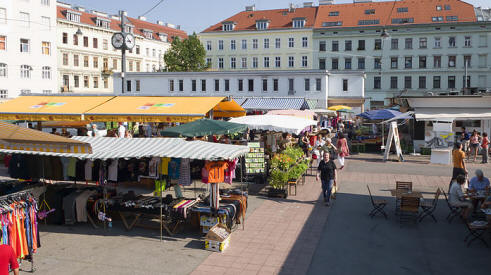
Traditional Viennese Dishes You Must Try
Wiener Schnitzel: The authentic version uses veal, is never served with sauce, and should be thin enough to flap in the wind. Try it at Plachutta or Zum Schwarzen Kameel for textbook examples.
Sachertorte: Vienna's most famous dessert, invented at Hotel Sacher in 1832. The original recipe remains a closely guarded secret, but the dense chocolate cake with apricot jam filling represents Vienna's commitment to culinary perfection.
Tafelspitz: Emperor Franz Joseph's favorite dish—boiled beef served with root vegetables and apple horseradish. This comfort food showcase Vienna's ability to elevate simple ingredients through careful technique.
Vienna Café Culture: The World's Original Third Place
Vienna invented the concept of the coffeehouse as a social institution. These aren't merely places to drink coffee—they're cultural centers where newspapers from around the world are available, where intellectuals debate philosophy, where business deals are made, and where time moves at a more civilized pace.
Essential Café Experiences: Start at Café Central (historical atmosphere), visit Demel (imperial pastry supplier), experience Café Landtmann (Freud's favorite), and discover Café Museum (designed by Adolf Loos).
⚠️ Cultural Etiquette
Café Behavior: It's perfectly acceptable to sit for hours with one coffee and a newspaper. Viennese cafés are designed for lingering, not rushing.
Restaurant Timing: Dinner typically starts after 7 PM. Lunch service may end by 2 PM at traditional establishments.
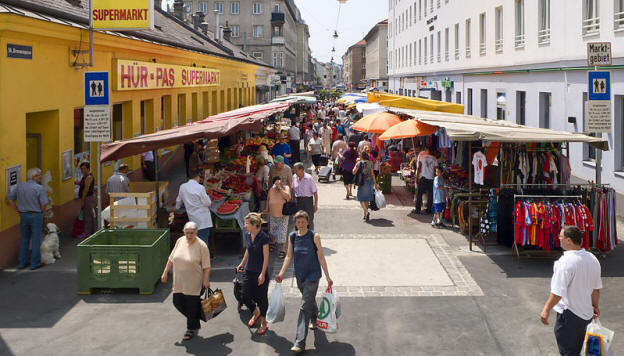
Vienna's Music Scene: From Mozart to Modern
Vienna's musical heritage extends beyond tourism marketing—it's woven into the city's daily life. Street musicians perform classical pieces, church concerts offer intimate chamber music experiences, and the Vienna Philharmonic maintains standards that make it the world's most prestigious orchestra.
Musical Vienna Experiences
Vienna State Opera: Even if opera isn't your passion, the building itself deserves attention. The neo-Renaissance architecture and interior decorations represent 19th-century artistic achievement at its peak. Standing room tickets offer affordable access to world-class performances.
Musikverein: Home to the Vienna Philharmonic, this concert hall possesses acoustics that musicians describe as perfect. The Golden Hall's New Year's Concert broadcasts worldwide, but regular concerts offer equally impressive experiences without tourist crowds.
Classical Concerts in Historic Venues: Many palaces and churches host intimate concerts featuring period instruments and historically informed performances. These smaller venues often provide more personal connections to Vienna's musical legacy.
Seasonal Vienna: When to Experience Austria's Capital
Spring (March-May): Vienna Awakens
Spring transforms Vienna into a garden city. Schönbrunn's gardens bloom spectacularly, outdoor café seating returns, and Naschmarkt offers the season's first fresh produce. Weather can be unpredictable, but the city's energy becomes infectious as Viennese embrace longer daylight hours.
Spring Highlights: Vienna Festival season begins, park concerts resume, and wine garden season opens in the Vienna Woods.
Summer (June-August): Imperial Splendor
Vienna's high season brings warm weather perfect for palace garden exploration and outdoor dining. Naschmarkt buzzes with activity, the Danube Island becomes a recreation center, and evening concerts in historic courtyards create magical atmospheres.
Summer Considerations: Higher accommodation prices, crowded attractions, but extended museum hours and outdoor cultural events provide compensation.
Autumn (September-November): Vienna's Golden Season
Many locals consider autumn Vienna's most beautiful season. Comfortable temperatures, harvest season at markets, golden foliage in palace parks, and the beginning of concert season create ideal conditions for cultural exploration.
Autumn Advantages: Fewer tourists, perfect weather for walking, harvest festivals, and optimal photography lighting.
Winter (December-February): Intimate Vienna
Vienna's Christmas markets transform the city into a winter wonderland, while concert halls and museums offer cozy cultural escapes. Naschmarkt operates with winter specialties, traditional cafés become especially welcoming, and the pace of life slows to more contemplative rhythms.
Winter Magic: Christmas markets, opera season peak, intimate café culture, and fewer tourists at major attractions.
Getting Around Vienna: Transportation Made Simple
Vienna's public transportation system ranks among Europe's most efficient and comprehensive. The integration of U-Bahn (subway), trams, and buses means virtually every attraction is easily accessible without private vehicles.
Vienna Public Transport Options
U-Bahn System: Five color-coded lines connect all major districts. The U4 line serves Naschmarkt (Kettenbrückengasse station) and continues to Schönbrunn Palace, making it particularly useful for visitors.
Historic Trams: Vienna's tram network, operating since 1865, provides scenic routes through the city. The Ring Tram offers tourist-friendly commentary while circling the historic center.
Walking Vienna: The historic center remains compact and pedestrian-friendly. Many attractions lie within 15-20 minutes walking distance of each other, allowing spontaneous exploration and café discoveries.
🚇 Transportation Tips
- Vienna Card: Includes public transport plus museum discounts
- Weekly Pass: Best value for stays over 4 days
- Validate Tickets: Always validate single tickets before travel
- Night Services: Limited night buses run when U-Bahn closes
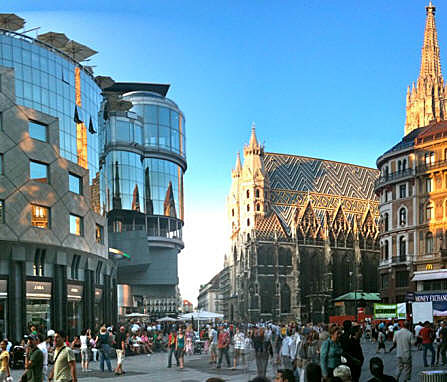
Vienna Shopping: Imperial Luxury to Local Markets
Shopping in Vienna ranges from luxury boutiques on Kohlmarkt (where royalty once shopped) to quirky vintage finds at Naschmarkt's Saturday flea market. The city's retail scene reflects its character—traditional quality alongside contemporary innovation.
Shopping Districts and Specialties
Kohlmarkt & Graben: Vienna's most exclusive shopping street, featuring international luxury brands in buildings with imperial connections. Window shopping here offers lessons in Austrian craftsmanship and design.
Mariahilfer Strasse: Vienna's main shopping street, stretching from the city center to Schönbrunn. This pedestrian-friendly boulevard offers everything from international chains to local designers.
Naschmarkt Flea Market: Every Saturday, the western end of Naschmarkt transforms into Vienna's largest flea market. Hunt for antiques, vintage clothing, and unique treasures while experiencing local bargaining culture.
Austrian Specialties: Look for traditional dirndls and lederhosen, Austrian crystal from Swarovski, Mozart chocolates (though locals prefer other brands), and quality outdoor gear from Austrian manufacturers.
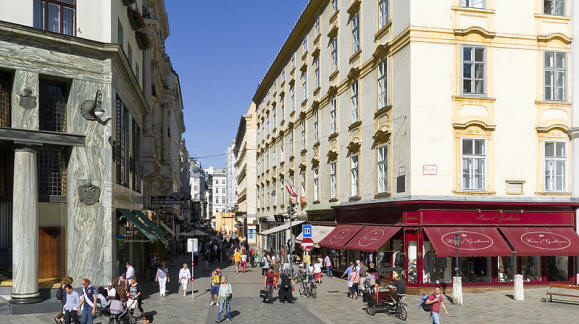
Day Trips from Vienna: Exploring Austria's Treasures
Wachau Valley Wine Region (1.5 hours by train)
This UNESCO World Heritage valley along the Danube offers spectacular scenery, medieval castles, and Austria's finest white wines. Visit during autumn for harvest season or spring for apricot blossoms that transform the valley into a pink paradise.
Salzburg (2.5 hours by train)
Mozart's birthplace deserves its own visit, but makes an excellent day trip for those wanting to experience Austria beyond Vienna. The UNESCO-listed old town, spectacular Alpine scenery, and musical heritage create unforgettable experiences.
Danube Valley Cycling
The Danube cycling path, one of Europe's most popular bike routes, begins in Vienna. Rent bicycles and ride through wine country, stopping at traditional Heuriger wine taverns for lunch with Danube views.
Vienna for Food Lovers: A Culinary Journey
Vienna's food scene deserves special attention, particularly for visitors who want to understand the city through its flavors. Start your culinary education at Naschmarkt, but don't limit yourself to market exploration.
Consider joining a Vienna food tour to discover hidden gems and understand the stories behind traditional dishes. Professional guides share knowledge that transforms meals from simple sustenance into cultural education.
Traditional Heuriger (wine taverns) in Vienna's outlying districts offer authentic experiences where locals gather to sample new wines paired with cold buffets. These establishments provide insight into Vienna's village-like outer districts and wine-making traditions that date back centuries.
🍷 Vienna Food Experiences
- Professional food tours starting at Naschmarkt
- Traditional Heuriger wine tavern visits
- Cooking classes featuring Austrian specialties
- Coffee culture workshops in historic cafés
- Market tours with professional chefs
- Explore Brunnenmarkt - Vienna's authentic neighborhood market experience
Where to Stay in Vienna: Accommodation Guide
Vienna offers accommodation options ranging from imperial luxury to budget-friendly hostels, but location significantly impacts your experience. Staying near Naschmarkt provides easy access to the city's culinary heart while remaining well-connected to major attractions.
Our comprehensive Vienna hotels guide covers everything from luxury 5-star properties to charming boutique options and budget-friendly alternatives. Consider factors like proximity to public transport, walking distance to attractions, and neighborhood character when making your selection.
Neighborhood Recommendations: The area around Naschmarkt offers authentic Vienna character without tourist crowds, excellent restaurant access, and convenient transportation connections to all major attractions.
Vienna Practical Information: Essential Details
Currency and Payment
Austria uses the Euro (EUR). Credit cards are widely accepted at hotels, restaurants, and shops, but carry cash for markets, small cafés, and public transportation. Tipping is customary at restaurants (round up or add 10%) and for services.
Language and Communication
German is the official language, but English is widely spoken in tourist areas. Learning basic German phrases shows respect and often results in warmer interactions with locals.
Health and Safety
Vienna ranks among Europe's safest cities. Tap water is excellent quality, medical facilities are modern and accessible, and pharmacies (Apotheke) provide good advice for minor health issues.
Internet and Technology
Free Wi-Fi is available in most hotels, many cafés, and public spaces. European visitors should check roaming charges; international visitors may want local SIM cards for extended stays.
Vienna rewards those who approach it with curiosity and respect for its traditions. This isn't a city to rush through—it's a destination to savor, like a perfectly prepared schnitzel or a carefully brewed coffee. Take time to linger in cafés, strike up conversations with market vendors, and allow yourself to be swept up in the gentle rhythm that has made Vienna one of the world's most livable cities for over a decade running.
